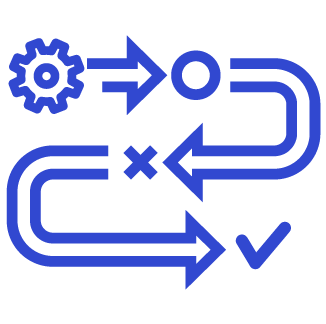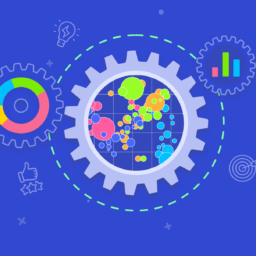
How are companies turning data into relevant customer insights?
To face the customers’ increasing demand, business departments need more and more insights. Companies has to develop their organization and methods to optimize the data value chain: from collecting data to the use of customer insights by the business departments.
The technical approaches of customer data analysis
Several technical approaches allow company to produce customer insights:
The qualitative approaches

- The interviews and qualitative surveys allow to get detailed information about customers behaviors, their attitudes, and needs.
- The customers listening highlights customers comments through satisfactions surveys, online comments, or conversations from call centers.
- Users and customers tests allow to observe how they use a service or product. It is then possible to identify the sticking points and opportunities for improvement.
These approaches are precise and allow to understand in-depth customers behaviors. However, they are time consuming and costly. Significant human resources are necessary to carry out these analyses, that are most of the time more complex than quantitative analyses.
Qualitative analyses involve reliability flaws, such as:
- The sample or clients/users group on which the analysis is based.
- Human interpretation of the analysis is potentially subjective.
There are tools, using methods of sentiment analysis, that allow to limit human flaws and analyze more quickly and automatically the data. These methods are appropriate for understanding customers behaviors. But they do not allow marginal profits considering the volume and type of insights produced for the business teams.
The quantitative approaches

- The surveys, carried out on a large scale, allow to get statistical data about customers behaviors and preferences.
- The analysis of behavioral and transactional data can also allow to better understand the customers consumption and preferences. These analyses can involve data from many customer contact channels (digital channels (website and application), social media, call centers, etc.).
Quantitative analyses are not limited regarding the data volume used and allow to quickly produce different types of customer insights. It is the prime type of analysis used by big companies that have access to important amount of behavioral and transactional data.
However, these analyses can be a challenge for the business teams to interpret them if the data context is not precise enough or hard to understand. The analyses can, then, become time consuming and dependent of the analysts’ actions to help to interpret the results. These analyses require appropriate tools to stock, combine, analyze, and communicate these data to the business teams, therefore an expensive infrastructure.
The organizations are evolving to better use data

The iterative approach has allowed the data chain of value, especially for the analysts, to face the challenges posed by the business departments to provide more and better customer insights. The agile approach allows to have more responsiveness and speed to meet the business teams’ requirements. The analyses’ delivery time are shortened thanks to smaller working batches. This way of working’s flexibility allows to iterate and continuously improve the quality of the deliverable.
The use of data from diverse sources has also allow to produce better quality insights and to find correlations among cross-channels factors. It is possible thanks to organizational changes, evolutions of data governance but also thanks to the use of data management tools, especially for stocking, combining, and integrating the data.


The collaboration between the business and analysts teams allows to meet precisely the business departments’ needs, to produce relevant insights and continuously improve them. This proximity also brings a strong visibility of the analysis process and encourages the adoption of data management.
The use of appropriate tools for the production and communication of insights allows the data teams to keep increasing their productivity regarding the analytical production and communication of insights to the business teams. These past years, tools specialized in business insights production have been developed. datakili, for instance, is an analysis and visualization tool paired with a team of experts who support you on each key step of insights production, so you can make the best decisions and improve your customer relationship.

To conclude, the organizations looking to turn data into relevant customer insights have to adopt appropriate technical approaches and evolve on an organizational level. Key factors to succeed in this transformation include : the iterative approach, the collaboration between business and analysts teams, the use of data from diverse sources and the use of suitable tools. By investing on these areas, companies will be able to better understand their customers, optimize their relationship and improve their performances.
Do not miss out this opportunity to adopt an approach based on the data and make the most out of it for your company. Start now by exploring different tools available such as datakili to transform your data into precious and relevant customer insights. To learn more about us, please contact us.















